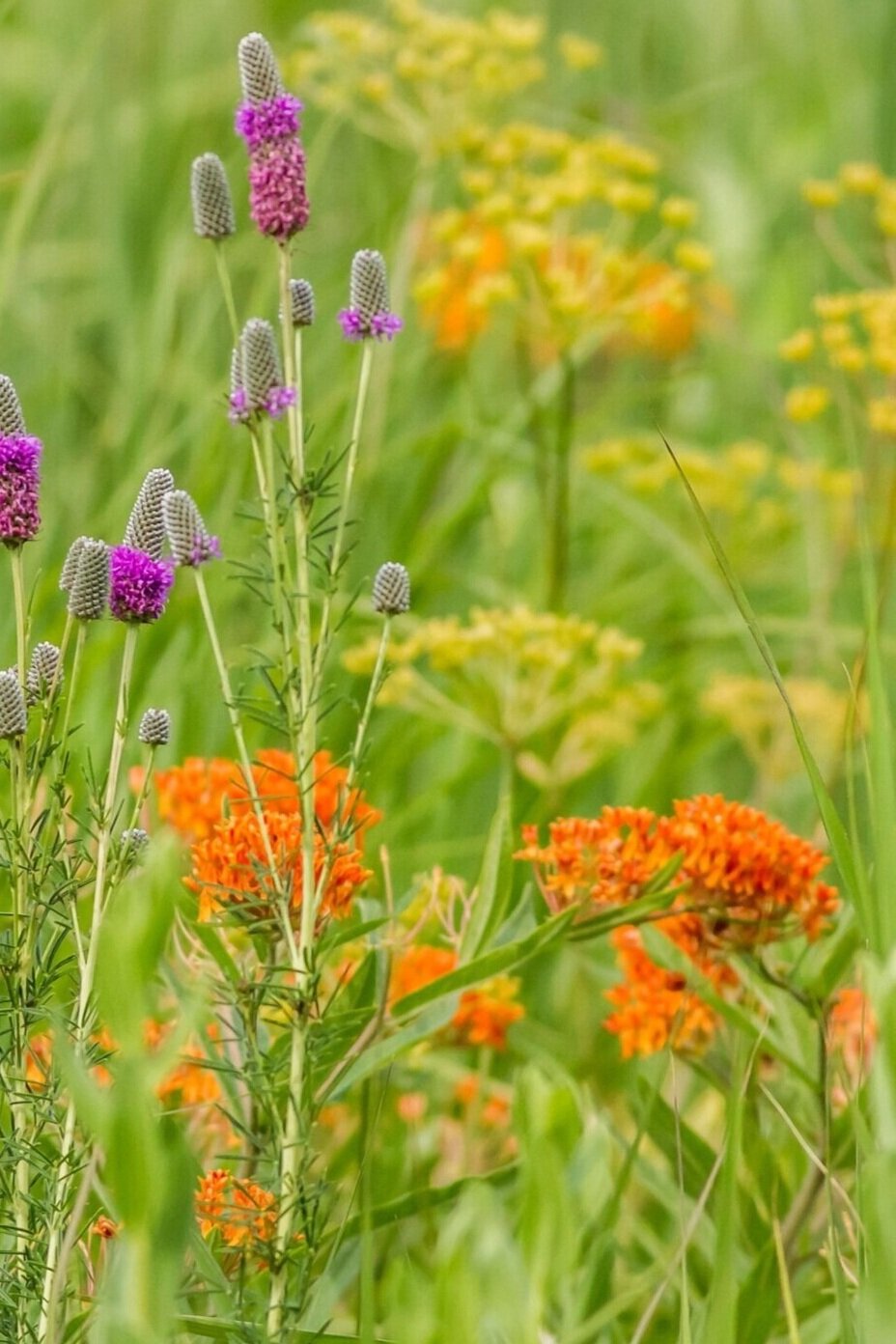Growing a Home Garden for Beginners: Flowers
By Sue Cozzens
Image: Annie Spratt
Gardening is my sport. While everyone else is swinging a club or racquet, you’ll find me shoveling mulch or wrestling with hoses. Both require skill, physical endurance, and a competitive spirit. It’s me versus the deer and the drought! It’s also a bridge to friendships and community—I know all the neighborhood news because passersby stop to chat and I’m outside a lot more than most.
My best advice for a beginning gardener is to start small and build on your success. Do not plant more than you can water, weed and care for properly or your refuge will turn into just another stressor in your life. Front entrance or patio gardens are great spaces to start, because they welcome you home or beckon you to sit for a minute.
Next, start with easy plants. There is a saying, “right plant, right place,” meaning if you choose the right plant for your conditions (soil, sunlight, space, climate), the maintenance is much easier on you and Mother Earth!
My Top 6 Perennials for the Midwest:
A perennial is a plant that comes back year after year. The term is often used to differentiate a plant from shorter-lived annuals and biennials.
1. HOSTA
Hostas have a huge size range and are easy to care for. Leaf color ranges from blues to greens to gold and combinations of all three. In July or August, they sprout flower spikes in white or lavender.
Sun Exposure: Mostly meant for shade but many can take some sun
Water: A slow, deep soaking of around an inch of water per week through the growing season is perfect. A single deep soak every week is always better than multiple, light waterings, which is true for most plants. If it rains an inch, then generally the plant will not need to be watered at all if it’s been in the ground for a month or so. Hostas may need a bit more water if planted in the sun
Favorite Variety: ‘Sum and Substance’ for their huge chartreuse leaves
Helpful Tip: Can be bothered by slugs that eat holes in the leaves. If this happens opt for an organic solution to help curb the bugs.
2. DAYLILY
Daylilies are easy to care for, pest free, comes in many colors, and some bloom all summer. Even when not in bloom, they have lovely grass-like foliage.
Sun Exposure: Mostly needs sun but can bloom in semi-shady areas
Water: Daylilies love water during the growing season and prefer about an inch of water per week
Favorite Variety: ‘Ruby Spider’—2-3 feet tall with red petals and yellow center
Helpful Tip: Cut the flower stalks off when they are finished blooming
3. ORNAMENTAL GRASSES
So much variety. They can be short or as tall as 8 feet or more! Some have straight leaves while others have fountain-like foliage, all in shades of blue or green. They are very easy to care for and can cover a lot of ground pretty quickly.
Sun Exposure: Mostly sun but many grow in some shade, and there are native varieties.
Water: Water every other day after planting, gradually extending the time between watering. After 2 or 3 weeks, an inch a week is enough. Most can handle dry conditions
Favorite Variety: Molinia ‘Skyracer’
Helpful Tip: Leave the grasses standing all winter, as birds use it for nesting.
4. SUCCULENTS
Great between pavers in a walkway or spilling over/out of spaces in a brick or boulder wall.
Sun Exposure: Full Sun
Water: These plants can handle a bit less than an inch a week, but are not hurt by a little more than they need.
Favorite Variety: Sedum ‘Lemon Coral.’
Helpful Tip: Pull the flower spikes off after they turn brown
5. ALLIUM
This plant is actually an ornamental onion, like a chive, but way better. It’s not the allium bulb you plant that blooms in the spring, this is a bit different. It blooms in mid-summer and has beautiful grass-like leaves.
Sun Exposure: Sun or part shade
Water: An inch a week, either from rain or watering.
Favorite Variety: Allium ‘Millenium’
Helpful Tip: Tuck some in among other plants to deter the deer
MILKWEED (ASCLEPIAS TUBEROSA)
This is a native plant to eastern and southwest North America that produces nectar for many pollinating insects, and is a larval food plant for monarch butterflies. It’s also a bright orange, 12-inch-tall plant that is beautiful! Native plants are an important addition to any garden. They are generally easy care and are host plants for many beneficial insects and birds.
Sun Exposure: Full sun to part sun
Water: An inch a week is plenty.
Helpful Tip: If the caterpillars are eating it, that’s a good thing, we need butterflies! Don’t pick them off.
Other Advice for Beginner Gardeners
Join a garden club or local native plant society. Most communities have one. It’s one of the best things I ever did for myself. I’ve made many lifelong friends and have learned so much. Visit your local botanical garden and, if they offer them, take classes. And don’t forget to join and support them too!
Get yourself some good garden tools, it makes everything so much easier! My favorites:
Felco pruners for deadheading, cutting back foliage, etc.
Cape cod weeder—right or left handed—really gets under the root
Gloves if you don’t want to have chronically dirty nails like me
Cushion to kneel or sit on
Rain gauge
These items also make great gifts for the gardener in your life! Finally, but actually before you start, Take The Healthy Yard Pledge! Read all about it here.
SUSTAINABLE GARDENING
RECOMMENDATIONS BY SISTAIN
Gloves made with 100% natural hemp fiber
$12.99
Watering can made with galvanized steel, packaged and shipped in 100% recycled materials
$28
Hand trowel made of stainless steel, packaged and shipped in 100% recycled materials
$30
About Sue Cozzens
In my old life in Chicago, I was a certified master gardener and president of my garden club. As a retiree living on two acres in Central Illinois, I volunteer as The Garden Club of America Conservation and National Affairs and Legislation Committee representative for seven states. So everything I do in my garden is focused on what is best for the environment. It’s not “100% organic” and perfect, but it’s close, and I’m always striving to do better.














